Bergbaumuseum Peißenberg
Useful Information
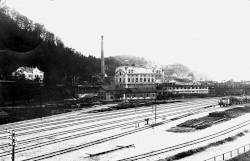
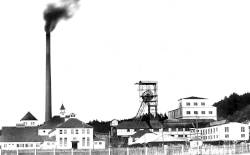
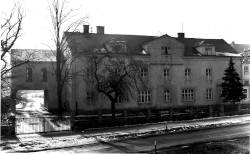
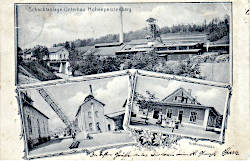
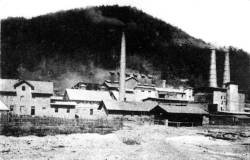
| Location: |
Peißenberg.
From Munich A95 and A952 to Starnberg, B2 to Weilheim in Oberbayern, torn right to Peißenberg. In Peißenberg signposted. (47.797173961316695, 11.057896567816584) |
| Open: |
15-MAY to 15-SEP Wed 13:30, 1st + 3rd Sun 13:30. 16-SEP to 14-MAY 1st + 3rd Sun 13:30. [2021] |
| Fee: |
Adults EUR 6, Children (6-16) EUR 2.50, Children (0-6) free, Trainees EUR 3.50, Students EUR 3.50, Disabled EUR 3.50, Harz IV Recipients EUR 3.50, Families EUR 13. Groups: School Pupils EUR 2. [2021] |
| Classification: |
 Coal Mine Coal Mine
|
| Light: |
 Electric Light Electric Light
|
| Dimension: | VR=1,245 m. |
| Guided tours: | L=200 m. |
| Photography: | allowed |
| Accessibility: | no |
| Bibliography: |
K. A. Weithofer (1920): Das Pechkohlengebiet des bayerischen Voralpenlandes und die Oberbayerische Aktiengesellschaft für Kohlenbergbau, Denkschrift aus Anlaß des 50-jährigen Bestandes dieser Gesellschaft (1870–1920), München 1920, 344 Seiten Max Biller, Ludwig Stippel (2006): Bergbau und Bergbau-Museum am Hohen Peißenberg, 3. erweiterte Auflage von 2006 |
| Address: |
Bergbaumuseum Peißenberg, Tiefstollen 2, 82380 Peißenberg, Tel: +49-8803-5102.
E-mail: Knappenverein Peißenberg e.V., E-mail: Vorsitzender: Rudi Hochenauer, Tel. +49-8805-524. |
| As far as we know this information was accurate when it was published (see years in brackets), but may have changed since then. Please check rates and details directly with the companies in question if you need more recent info. |
|
History
| 1540 | presumed discovery of coal. |
| 1580 | according to legend, the farmer boy Christoph Lenker builds a fire on the south side of the Hoher Peißenberg while herding cattle and discovers the coal. |
| 1593 | mining at the instigation of the Wittelsbach Duke Wilhelm V.. |
| 08-MAY-1837 | start of systematic state mining of coal in the Alpine foothills. |
| 1866 | railway line Tutzing-Weilheim-Unterpeißenberg opened. |
| 1869 | start of mining in Peißenberg, stop of the "Tiefstollen". |
| 1875 | works railway from Unterpeißenberg station to the mine, Sulz works railway station owned by the mine. |
| 1879 | works railway opened to passenger traffic and Sulz station renamed Peißenberg in 1880. |
| 1912-1915 | main shaft sunk in Peißenberg. |
| 13/15-DEC-1919 | two coal dust explosions, 15 dead and 21 injured. |
| 1927 | newly founded Bayerische Berg-, Hütten- und Salzwerke (BHS) takes over the mines. |
| 1951 | Rammbetrieb, a new mechanical mining method for shallow seams, is introduced. |
| 1954 | mechanisation of coal extraction with coal ploughs and armoured conveyors, pithead gear renewed at the Zieglmeierschacht. |
| 1963 | highest total workforce of 3913, the highest annual production of 990,000 tonnes. |
| 31-MAR-1971 | mine closed. |
| MAR-2006 | audio guides introduced. |
Geology
The Peißenberg mine is one of several coal mines in the foothills of the Alps. In the area between the Lech and Inn rivers there are several depressions with bituminous coal deposits. At Peißenberg this is the Peißenberger Mulde, which is the northernmost of the three large synclines in the west of the so-called Faltenmolasse. The coal deposit extends 20 km in an east-west direction and 4 to 5 km in a north-south direction. There are 28 seams. About half of the coal has been mined, about 40 million tonnes of coal are still present.
Bituminous coal or black coal was named for its shiny black appearance. It is a strongly incarbonated hard lignite and has a deposition age of 35 to 40 million years. With a carbon content of 60 %, it has a calorific value of between 21,000 kJ/kg and 23,500 kJ/kg. By comparison, anthracite or hard coal has a calorific value of about 31,000 kJ/kg. The ash content is about 10 % and the water content about 8 to 10 %. It has a high proportion of volatile components and a high sulphur content. It is not suitable for coking or briquetting.
During the Tertiary period, before the formation of the Alps, there was mainland in the area of today’s Alps, and a sea basin to the north and south respectively. On the shores, in a tropical climate, there were bogs that repeatedly sank below sea level and were covered by marine sediments. Coalification progressed further than with lignite, but did not reach the level of hard coal from the Carboniferous. The orogeny of the Alps also raised and simultaneously eroded the Pre-Alps, bringing the coal close to the surface.
Description
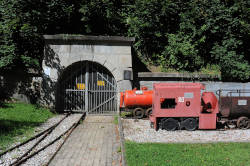
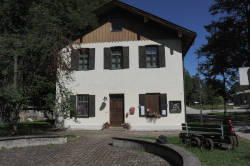


The Bergbaumuseum Peißenberg (Mining Museum Peißenberg) has three sections, the main building with museum, the adventure gallery and the exhibition hall. The former colliery house, the main building, houses the ticket office and a mining museum with 14 rooms. The geological diagrams explain the formation of the coal seams in the foothills of the Alps. Tools, shaft models and pit lamps illustrate the work of the miners. The original mining process using arduous manual labour is presented, as is the increasing modernisation of coal extraction. Mining surveying is explained, as is the mine rescue. Uniforms, numerous photos, and personal documents give an impression of the miners’ lives. Afterwards, the so-called Tiefstollen (deep tunnel) is visited with a guide to gain an insight into the miner’s working conditions underground. Presumably the tunnel is lately called the Erlebnisstollen (experience tunnel) because you can experience the atmosphere of mining. Back on the surface, you can also visit the Tiefstollenhalle (deep gallery hall), this exhibition hall houses the huge mining equipment and a very interesting showroom with a replica of the coal face.
The coal at Peißenberg was discovered in 1580 by the farm boy Christoph Lenker. He was herding cattle on the south side of the Hoher Peißenberg and built a fire. In the process, the black stones on which he had built the fireplace caught fire. He was only able to put out the fire by diverting a nearby stream. This is how it was discovered that coal was burning.
Mining at Hoher Peißenberg began as early as the 16th century, but only in small quantities. The coal was probably discovered as early as 1540, contrary to the above legend. In 1593, the Wittelsbach Duke Wilhelm V. initiated mining in the Ammerleite near Peiting. In the following, businessmen and local farmers mined small quantities. They used the coal to burn lime and bricks, as well as for domestic heating.
Systematic state mining of coal in the Alpine foothills officially began in 1837. In 1836, an order was issued by the General-Bergwerks- und Salinen-Administration (General Mining and Salt Works Administration) to the Oberbergrat Freiherr von Gumppenberg to open a mining district in Hohenpeißenberg. On 08-MAY-1837, the obere Stollen (upper tunnel), later called the Hauptstollen (main tunnel), was started in the Brandach district of Hohenpeißenberg. The first coal was mined in 1840. Soon after, more adits were built, but in the pre-industrial era, demand was still low and sales problems led to a coal crisis. Mining shifted eastwards, following the coal, to Peißenberg with the digging of the Tiefstollen (deep tunnel) in 1869. The output increased sharply when a railway connection was made available for transport in 1875. Eventually, however, the coal near the surface was mined out, and it became necessary to tap deeper layers. From 1889 to 1895, two shafts were sunk to a depth of 280 m in Hohenpeißenberg, one for mining and the other for dewatering and ventilation. From 1912 to 1915, the Hauptschacht (main shaft) was sunk in Peißenberg; it was renamed Zieglmeierschacht in 1954. This again massively increased the mining volume. By 1923, 1.5 million tonnes had been mined here, and by the time the mine closed in March 1971, the figure had risen to over 32 million tonnes.
The so-called Bockerlbahn, on the site, is not a mining railway. Rather, it is a fully functional model railway on which you can even ride. The track length is 370 m, the gauge 7 1/4 inches. It is run by the Bockerlbahner Club and is open on Sundays between May and October at the same time as the mining museum.
 Search DuckDuckGo for "Bergbaumuseum Peißenberg"
Search DuckDuckGo for "Bergbaumuseum Peißenberg" Google Earth Placemark
Google Earth Placemark Bergwerk Peißenberg
Bergwerk Peißenberg  - Wikipedia (visited: 12-OCT-2021)
- Wikipedia (visited: 12-OCT-2021) Bergbaumuseum Peißenberg, official website
Bergbaumuseum Peißenberg, official website  Index
Index Topics
Topics Hierarchical
Hierarchical Countries
Countries Maps
Maps